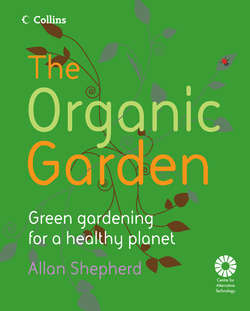Читать книгу The Organic Garden - Allan Shepherd - Страница 10
Five: grow for ornament
ОглавлениеVegetable plots are only part of the story. Ornamental gardens can be organic, and edible and non-edible plants can be grown together in beautiful spaces. And beautiful spaces change lives. We are only beginning to understand how bad spaces ruin lives, but with each passing year there are fresh studies that reinforce the commonsense view that people with access to beautiful spaces are happier. Just as we see studies showing that young people perform better at school if they have access to healthy food, so we are beginning to see how people of all ages perform better in beautiful environments. In Chicago, crime rates have fallen dramatically in areas where new parks have been created. It seems that people have more respect for each other and their local area when they are under less stress. And access to beautiful spaces reduces stress.
When I was twenty-six I met my friend and long-time collaborator Chloë Ward. Chloë is a true gardener, by which I mean it is her main occupation. Much of what I know about gardening I owe to her. Chloë is one of those rare people who can see beyond that which exists today to think about what might be possible in the future. Like Elzéard Bouffier, she plants for her own enjoyment but with an eye on what might be in the years to come. Many of the pictures you’ll see in this book are taken at the Garden Organic (HDRA) gardens in Yalding, where she formerly worked as deputy head gardener. Chloë’s particular mission is to grow edible plants in spaces that are designed not as vegetable gardens but as ornamental landscapes, mixing the ornamental and the edible. A fact borne out by her writing on food gardens in this book, including the section on the up-and-coming and relatively new technique known as forest gardening, a subject about which she is one of only a handful of people qualified to write on.
